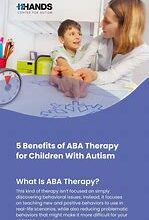- Understanding In-Home ABA Therapy: A Comprehensive Guide for Parents
- Specifications
- What Is In-Home ABA Therapy?
- Parental Involvement in ABA Therapy
- ABA Therapy Strategies for Parents
- Choosing an ABA Therapist
- Cost of In-Home ABA Therapy
- In-Home ABA Therapy vs Clinic
- Improving Child Behavior with ABA
- What to Expect from ABA Therapy
- ABA Therapy Success Stories
Understanding In-Home ABA Therapy: A Comprehensive Guide for Parents

Specifications
| Feature | Details |
|---|---|
| Camera | 108 MP |
| Battery | 5000 mAh |
| Display | 6.7 inches |
As a parent, understanding ABA Therapy—Applied Behavior Analysis Therapy—can seem daunting. But it needn’t be. This complete guide will shed light on the benefits of in-home ABA therapy, the costs involved, and what to expect during a session.
What Is In-Home ABA Therapy?
In-home ABA therapy is a form of autism treatment at home. It utilizes ABA therapy techniques to improve behavior in children with autism. Unlike clinic-based treatment, home-based autism therapy enables the child to learn in a familiar and relaxed environment.
Parental Involvement in ABA Therapy
One of the key benefits of in-home ABA therapy is it encourages parental involvement. Parents are provided with ABA therapy tips for parents which help them to reinforce the techniques used by the therapist, thereby furthering the child’s progress.
ABA Therapy Strategies for Parents
Several strategies can be employed to make ABA therapy at home effective. These include consistency in implementation, acknowledging positive behavior, and using visual aids among others.
Choosing an ABA Therapist
Choosing an ABA therapist is a crucial step in ensuring effective ABA therapy at home. Factors to consider include the therapist’s experience, reputation, approach to therapy, and their interaction with your child.
Cost of In-Home ABA Therapy
While the cost of in-home ABA therapy can vary, it’s generally more affordable than clinic-based therapy. This is because it eliminates costs associated with commuting, and often allows for more flexible scheduling.
In-Home ABA Therapy vs Clinic
While both in-home and clinic-based therapies have their merits, in-home ABA therapy offers unique benefits. It facilitates learning in a comfortable environment, encourages parental involvement, and often results in more consistent progress.
Improving Child Behavior with ABA
ABA therapy techniques are highly effective in improving child behavior. This is achieved by reinforcing positive behaviors and reducing harmful or disruptive ones. Over time, this leads to significant improvements in communication, social skills, and academic performance.
What to Expect from ABA Therapy
When starting ABA therapy, parents can expect an initial assessment of their child’s behavior. This is then followed by a personalized treatment plan that targets specific areas of improvement. Regular progress reports are also provided to keep parents informed.
ABA Therapy Success Stories
Many parents have shared inspiring ABA therapy success stories. These narratives often highlight significant improvements in their child’s communication skills, social interactions, and overall behavior.
Understanding in-home ABA therapy is the first step towards better managing your child’s autism treatment. With the right knowledge, support, and strategies, you can ensure your child gets the most out of their ABA therapy sessions.
“`





